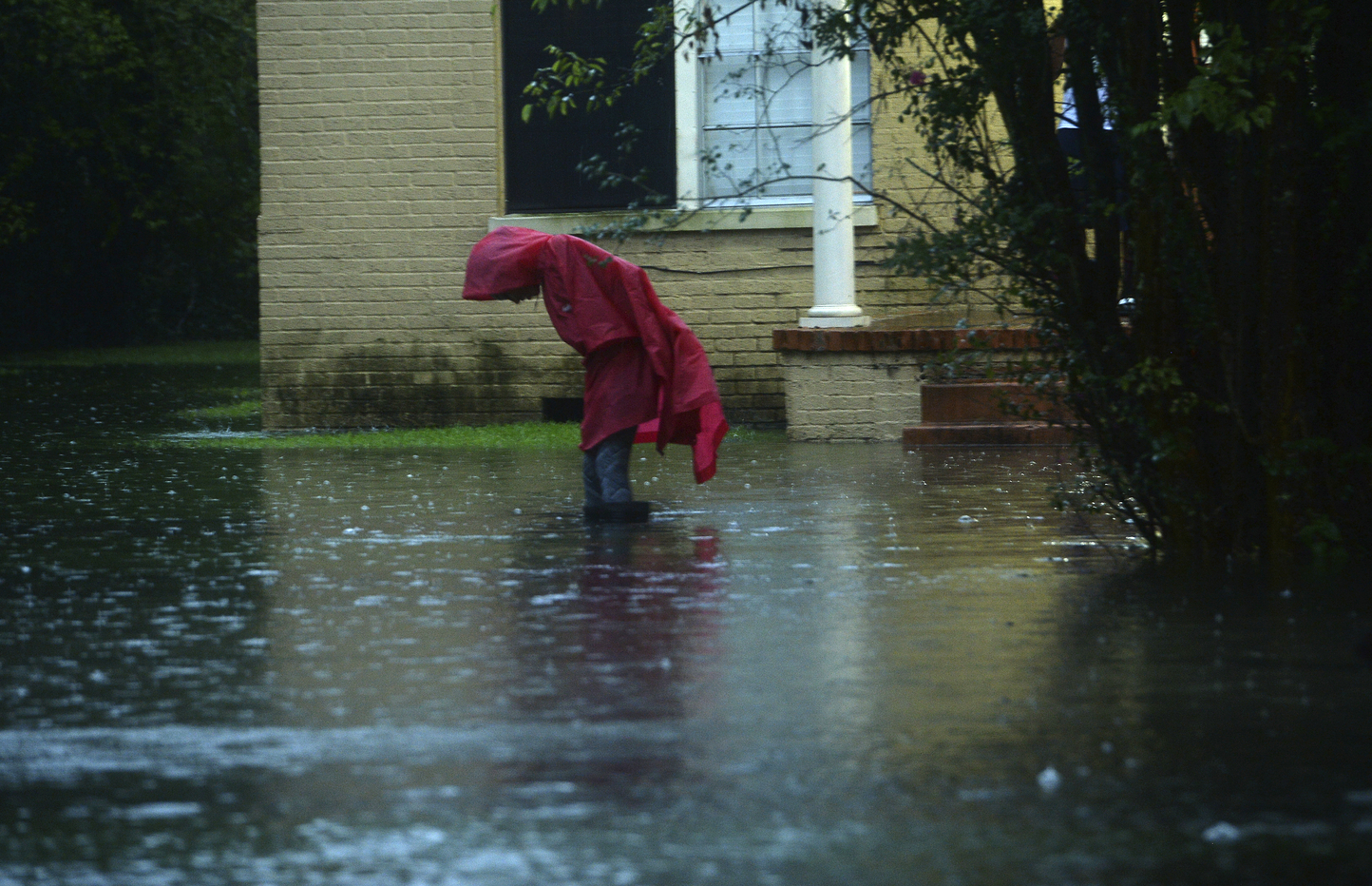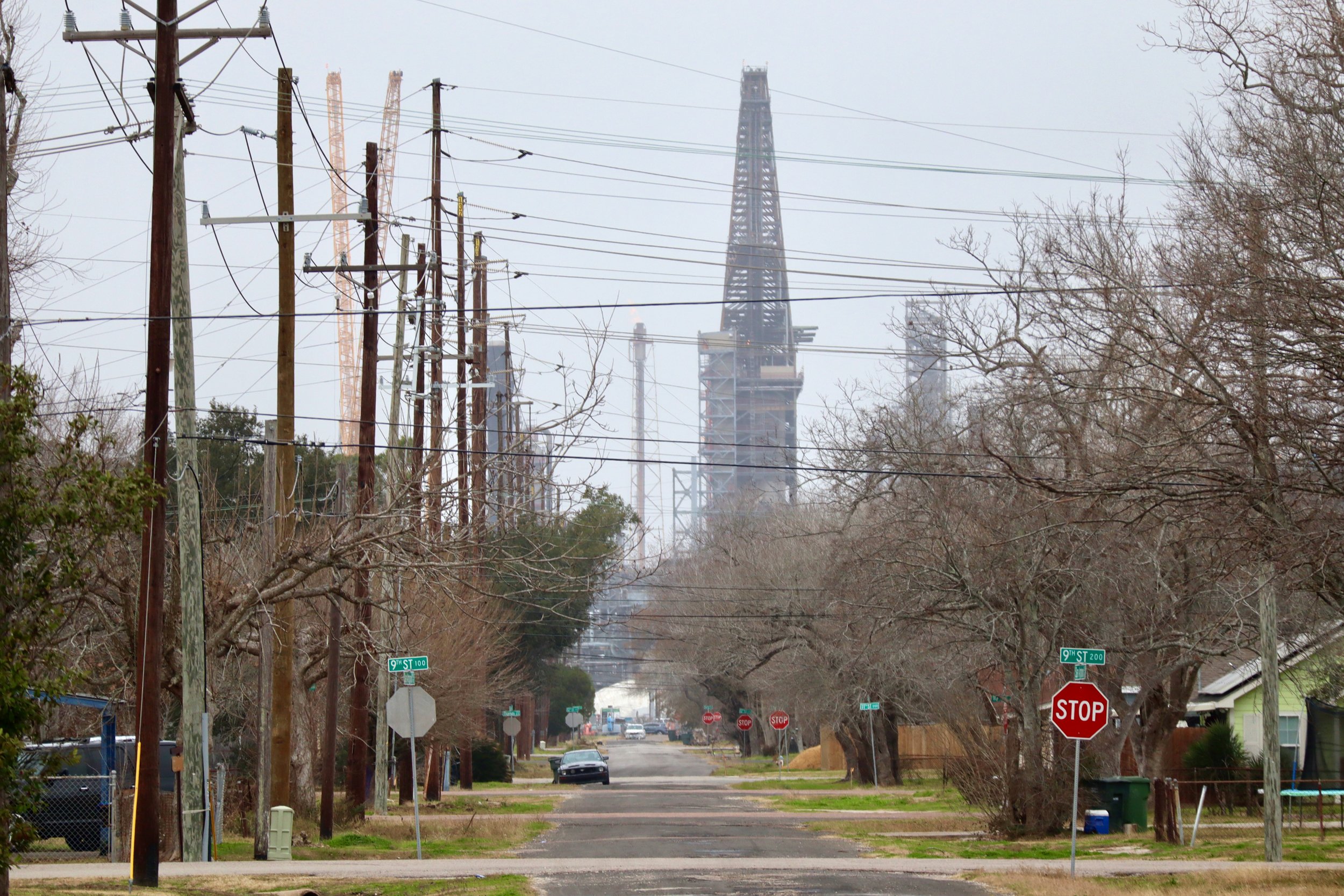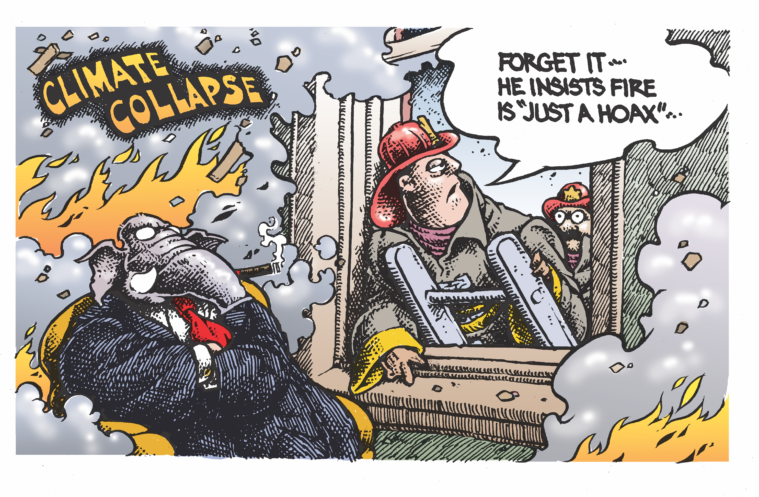
Five Times the Effects of Climate Change Loomed Over Texas in 2019
From sweltering droughts to a toxic algae bloom spreading in Texas waterways, the Observer takes a look back at the direct and indirect impacts of the climate crisis in Texas.

Above: Tropical Storm Imelda battered Southeast Texas in September 2019, another "500-year flood" to hit the area in the past few years.
In 2019, the climate crisis captured the nation’s attention in a notable and urgent way. Perhaps it was a reaction to the Trump administration rolling back numerous environmental protections, or Greta Thunberg’s electrifying speech at the U.N., or climate change effects being felt across the country. For Texans, talk of climate change escalated as the state experienced several extreme meteorological and environmental events, weather catastrophes that seemed to signal our new normal.
Climate Change Will Drive Up Energy Use in Texas
Over the summer, the Electric Reliability Council of Texas (ERCOT) urged customers to decrease their electricity consumption during the most sweltering part of the day. That’s because the state’s grid system had the lowest reserve margins in the country, a reality that could become more common as global energy demand continues to rise. (Some estimates say it will grow as much as 58 percent by the middle of the century.)
Texas has already seen a significant uptick in energy use; during Texas’s hottest day in 2019, the state used more megawatts of electricity than it did a decade ago. If Texas’ population doubles by 2050, as it’s expected to, more homes will need to be cooled during our scorching summers, which are also supposed to be more severe in years to come.
If a Glacier Melts in the Arctic, the Texas Coast Feels It
If you were ever concerned or interested about how a glacier dies, two Rice University anthropologists, Dominic Boyer and Cymene Howe, laid out the process in a recent documentary. Earlier this year, the Observer spoke with the Houston-based researchers about their 2018 film, Not OK, which documents the effects of warmer temperatures on a Okjökull (or OK for short). OK is the first Icelandic glacier lost to climate change, and its disappearance signals a similar trend for glaciers over the next two centuries.
Howe told the Observer that “part of the research is about recognizing the shift of feeling imperiled by your natural environment, to feeling compelled to protect your natural environment.”
And for those who don’t think the impacts of this particular aspect of the climate crisis matters here, remember that Texas has hundreds of miles of coastline: According to Boyer, “the ice melting in Greenland and Iceland right now is being redistributed across the globe to the Gulf of Mexico.”
Flood, drought, and wildfires! Oh, my!
After the Rio Grande Valley saw some intense flooding that resulted in the destruction of 1,000 homes, the Lower Valley was withered by an ongoing drought that caused locals to be concerned about wildfires.
According to Robert Mace, Texas State University’s chief water policy officer, “part of what [Texas] is seeing here is the legendary variability of weather in Texas.” And although it can be hard to blame one singular weather event on climate change alone, Mace reminds us that each one is influenced by the global phenomenon.
Last year, three-quarters of the state experienced droughts and experienced the worst wildfire year on record, which impacted more than 14 million people.
Climate Change Will Make Harmful Algae Blooms in Texas Waterways More Common
The Texas weather trifecta—warm winter temperatures, heavy spring rains, and parched summers—have other effects; they create the perfect brew for harmful blue-green algae to thrive. And the photosynthetic microorganism is expected to become more common due to climate change.
In late spring and early summer, the state saw above average rainfall “inundating [streams, rivers and lakes] with pollutants.” The summer heat later warmed and evaporated some water, leaving stagnant pools with “accumulated pollution”—runoff pollutants from cities and fertilizers from farms. Then, because there were so few rainstorms, the pollutants never flushed out of these bodies of water.
When that water sits, algae can bloom and sometimes release a toxin that causes respiratory problems, as well as rashes in humans. It also depletes oxygen content in water affecting marine life.
It had fatal consequences this past summer: several dogs died after swimming in Austin’s Lady Bird Lake, which contained the toxic blue-green algae. The city recently announced that it had spent $35,500 on 13 additional water tests since the algae appeared.
Tropical Storm Imelda and Texas’ 500-Year Floods
Earlier this year, Tropical Storm Imelda hit Southeast Texas and immediately became known as one of the area’s worst storms, rivaling 2017’s ruinous Hurricane Harvey. According to the National Weather Service, Imelda dumped more than 40 inches of rain in some parts of the area.
The Observer found that hurricane disaster relief hasn’t improved in much of Texas, leaving some areas like Port Arthur in “recovery limbo” after storms like Harvey and Imelda. The state, for its part, is doing some work on this front. In October, about two weeks after Imelda hit the coast, Governor Greg Abbott requested a federal disaster declaration to receive almost $30 million in aid for 13 counties, which experienced damage to almost 900 uninsured homes.
Texas will likely need a lot more funding to aid in future disasters. Imelda is one of several “500-year flood” events to hit Southeast Texas over the past few years, and environmental advocates continue to be concerned that similar storms will become more frequent and intensified by fossil fuel companies.
Read more from the Observer:
-
Where the Bodies are Buried: In 1910, East Texas saw one of America’s deadliest post-Reconstruction racial purges. One survivor’s descendants have waged an uphill battle for generations to unearth that violent past.
-
Why I Started a Book Club in the Harris County Jail: Education programs make jails safer and reduce rates of recidivism when people reenter society.
-
Texas’ Method for Funding Courts is a Colossal Waste of Time and Money: Criminal fines and fees, in addition to trapping poor people in a cycle of debt and incarceration, are an incredibly costly source of revenue for local governments, according to a new report.


